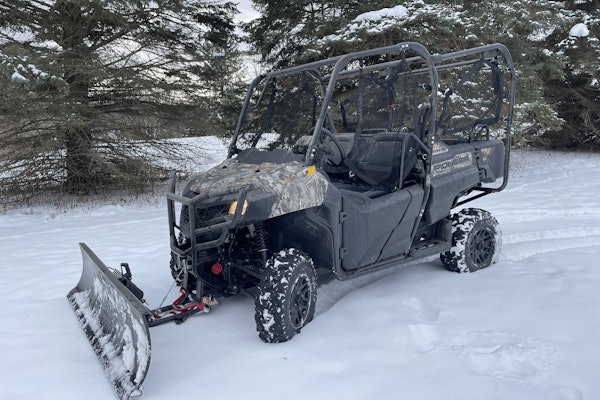Wacker began selling three models of compact wheel loaders this fall, expanding the company’s U.S. entries in compact machines – a lineup that will eventually include excavators and telehandlers under Wacker’s recent merger with Neuson Kramer Baumaschinen of Germany.
And at its 50th U.S. anniversary celebration press event in September, company officials hinted of products that contractors will see next year, particularly at the World of Concrete in January.
The initial compact wheel loaders – the 3-ton WL 30, 2.5-ton WL 25 and 1.8-ton WL 18 – are the product of Weidemann, a German company Wacker purchased in 2005. The models will be marketed as replacements for skid steers in certain applications, says Jay Baudhuin, product manager, compaction and compact class. “These loaders do not tear grass or mark concrete, both of which you can do with a skid steer,” he says.
Another advantage over a skid steer, according to Baudhuin: because of their smaller hydraulic systems the loaders require a smaller displacement engine, which is more fuel efficient. The loaders have either 3-cylinder (WL 18) or 4-cylinder Perkins (WL 25 and WL30) engines that deliver 25 horsepower on the WL 18, 33 horsepower on the WL 25 and 48 horsepower on the WL 30.
The WL 18 has more than 2,792 pounds of breakout force and a hydraulic lifting capacity of more than 4,145 pounds. On the WL 25, the breakout force measures 4,471 pounds and the unit has a hydraulic lifting capacity of more than 5,559 pounds. With a dump height of 95 inches, the WL30 also has a lifting capacity of 7,259 pounds. Equipped with a standard attachment adaptor plate, the machines can support 30 attachments to date – a number that will increase with the machine population.
Also from Wacker
Other products introduced reflect growing trends and coming realities.
The Dryvex MC5200 drying system from Ground Heaters, a Wacker company, is aimed at contractors who do restoration work after hurricane surges, floods and pipe burstings. Using what Ground Heaters calls “Dryvection” technology, the Dryvex unit uses outside air movement and heat to dry flooded buildings and their contents. The outside air, conditioned to low relative humidity, is blown into the building through flex ductwork. As the fresh, dry air circulates throughout the building, it absorbs large quantities of moisture. A thermostat automatically controls the desired inside temperature while a second blower extracts up to 900 gallons of moisture-laden air out per day, depending on ambient conditions. The unit has an airflow rate of 5,200 cfm and can handle up to 15,000 square feet of saturation.
As part of the introduction of its GV four-model portable generator series, Wacker will come out with California Air Resources Board-certified versions of the units next year. Designed to meet California ARB emissions requirements, these generators will redirect fuel vapors through filters back to the carburetor. Wacker estimates the revisions will add about $150 to $200 to the generator’s cost.










